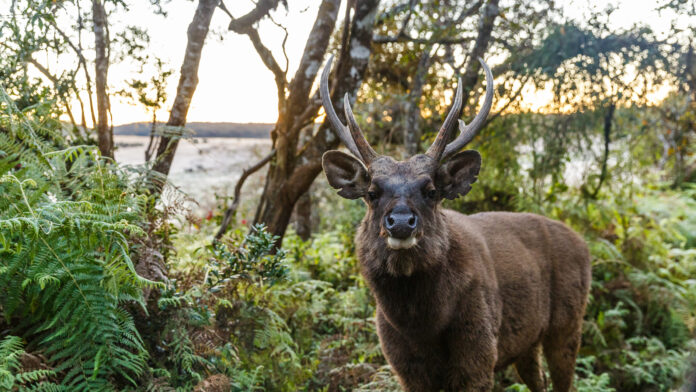Marketing Sri Lanka’s Natural Capital Without Exploiting It
Frontpage Journal | July 2025
Sri Lanka’s unparalleled biodiversity is one of its most valuable national assets. From the cloud forests of Horton Plains to the coral reefs of Pigeon Island, the island’s ecosystems are home to a stunning array of endemic species found nowhere else on Earth. This richness in natural capital offers a unique branding proposition for tourism, a way to differentiate the country in an increasingly crowded global marketplace. Yet the line between showcasing biodiversity and exploiting it is thin, and crossing it could cost Sri Lanka both its ecological integrity and its credibility as a sustainable destination.
In the post-pandemic travel era, demand is rising for authentic, nature-based experiences that offer travelers a connection to place, people, and purpose. Biodiversity tourism, defined by interactions with wildlife, flora, and landscapes in their natural settings, has significant potential to attract high-yield visitors. These travelers tend to stay longer, spend more, and seek deeper engagement with local guides, conservation experts, and community hosts. But tapping into this market requires more than promoting safari tours or birdwatching itineraries. It demands a thoughtful strategy that positions biodiversity as a brand narrative while embedding conservation ethics into every touchpoint.
Branding biodiversity begins with framing it as a national treasure that belongs to everyone but is vulnerable to misuse. The starting point is storytelling. Instead of selling Sri Lanka’s wildlife as a commodity, tourism marketing should tell the stories of its ecosystems, the ancient rainforests that sustain indigenous knowledge, the migratory paths of elephants shaped by millennia of movement, the fishing communities whose lives are tied to mangroves. These stories should be shaped by scientists, local communities, and conservationists, not just marketers. They should highlight the fragility of ecosystems and the responsibility of every visitor to tread lightly.
To ensure authenticity, destination branding must be grounded in science. Biodiversity mapping, species inventories, and ecological zoning should inform tourism development plans. Areas identified as biodiversity hotspots should be prioritized for low-impact, controlled visitor access. Tourism products, such as nature lodges, guided treks, or marine expeditions, should be designed to support conservation outcomes, with clear guidelines on group size, behavior codes, and seasonal timing to minimize ecological stress.
Collaboration with conservation agencies and researchers is essential to maintain scientific credibility. For example, linking tourism experiences to ongoing wildlife monitoring projects allows tourists to contribute to citizen science while gaining educational value. Visitors who participate in turtle conservation or forest replanting return home not just as tourists but as ambassadors for Sri Lanka’s biodiversity.
Equally important is the role of local communities as custodians of natural heritage. Biodiversity-focused tourism must benefit these communities economically and socially, creating incentives to protect rather than degrade ecosystems. Revenue-sharing models, employment of local guides, community-managed homestays, and micro-enterprise development all ensure that tourism income reinforces conservation behavior. Community ownership also enhances authenticity and helps preserve cultural knowledge about biodiversity.
However, without regulation, biodiversity branding can quickly devolve into greenwashing. Too often, nature tourism becomes an excuse for overdevelopment, with lodges and infrastructure encroaching into protected areas. The uncontrolled use of drones, off-road vehicles, or noisy crowds can disrupt animal behavior and damage fragile habitats. The Sri Lankan leopard or the sloth bear, once a point of pride, can become symbols of poor management and habitat loss if tourism is left unregulated.
This is where policy plays a decisive role. Clear, enforceable guidelines for biodiversity tourism must be part of national tourism and conservation strategies. Licensing systems for wildlife tours, environmental impact assessments for new developments, and limits on visitor numbers in protected areas are fundamental. Certification schemes for nature-based tourism operators, modeled after global programs such as the Rainforest Alliance or Biosphere Responsible Tourism, can help identify and reward ethical practices.
Marketing platforms also need to evolve. National tourism campaigns and websites should shift from showcasing generic beach imagery to emphasizing Sri Lanka’s unique ecological zones. Interactive biodiversity maps, profiles of conservation heroes, and behind-the-scenes looks at restoration projects can create compelling digital content that engages a conscious audience. Influencer collaborations, too, should be carefully curated to avoid misrepresentation or unethical behavior in natural settings.
Biodiversity as a brand must also be linked to risk mitigation. Climate change, invasive species, and habitat fragmentation are all escalating threats. If Sri Lanka’s ecosystems collapse under the weight of unregulated tourism or external pressures, the brand itself loses meaning. Therefore, tourism branding must be paired with resilience strategies, such as habitat corridors, buffer zones, and climate-adaptive infrastructure. Private sector players in hospitality and transport should be involved in habitat conservation funding through CSR programs or visitor contributions.
For international markets, Sri Lanka can position itself as a regional model of biodiversity stewardship. Aligning with frameworks such as the UN Decade on Ecosystem Restoration or the Convention on Biological Diversity enhances global legitimacy. Forming alliances with conservation tourism networks and responsible travel associations can attract the growing segment of travelers who make booking decisions based on ethics, not convenience.
In conclusion, turning Sri Lanka’s biodiversity into a compelling brand requires discipline, coordination, and integrity. It is not about selling wildlife encounters. It is about promoting a shared covenant to protect life in all its forms, while offering travelers meaningful, low-impact ways to experience that life. The brand is not the elephant or the rainforest. The brand is the value Sri Lanka places on nature, and the trust it earns by protecting it. If that value is upheld with clarity and care, biodiversity will not only be preserved, it will become a strategic asset for generations.




